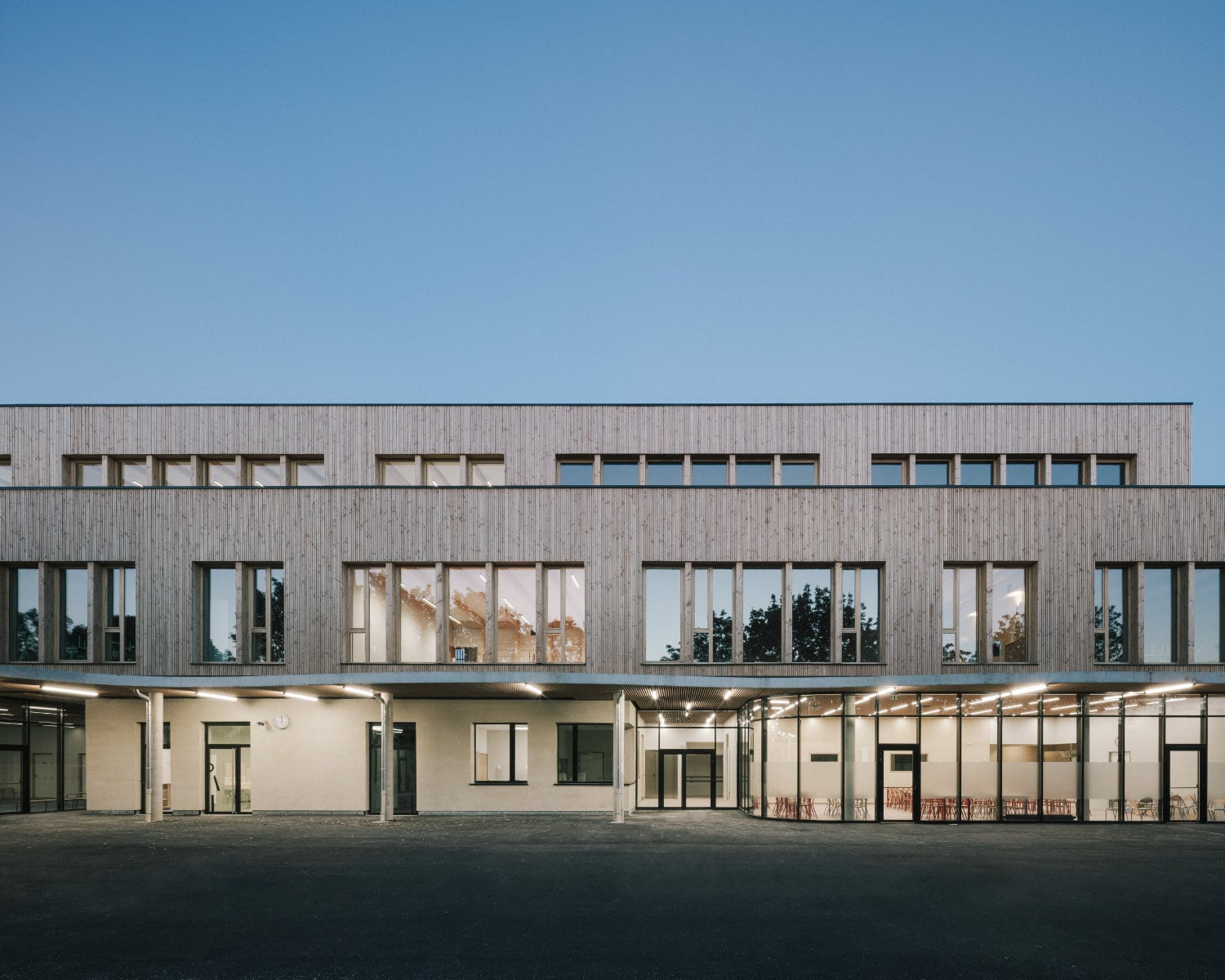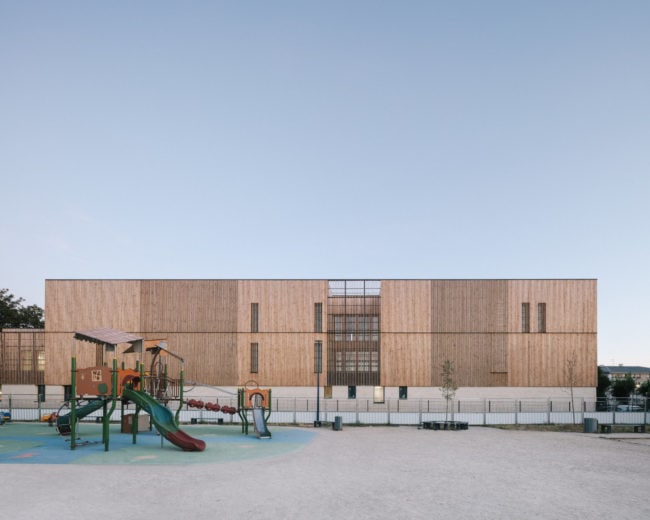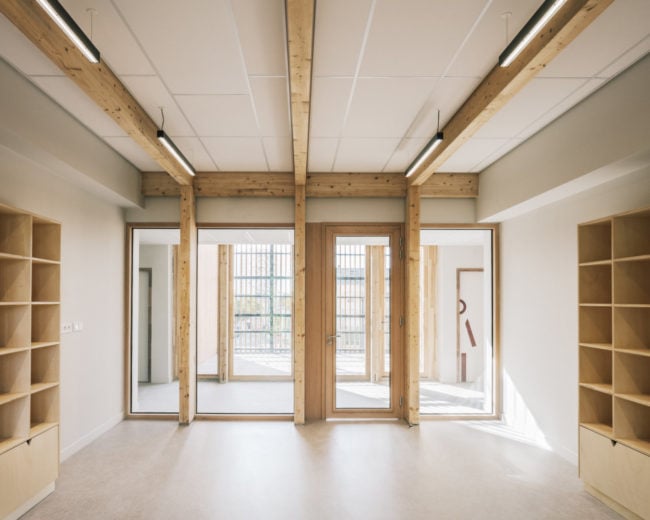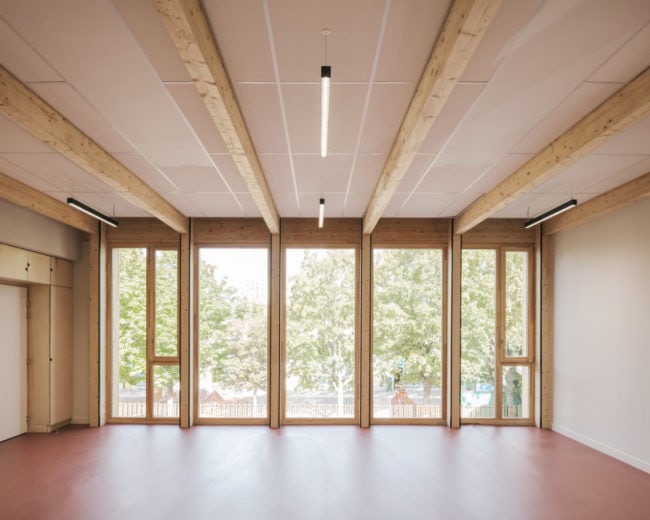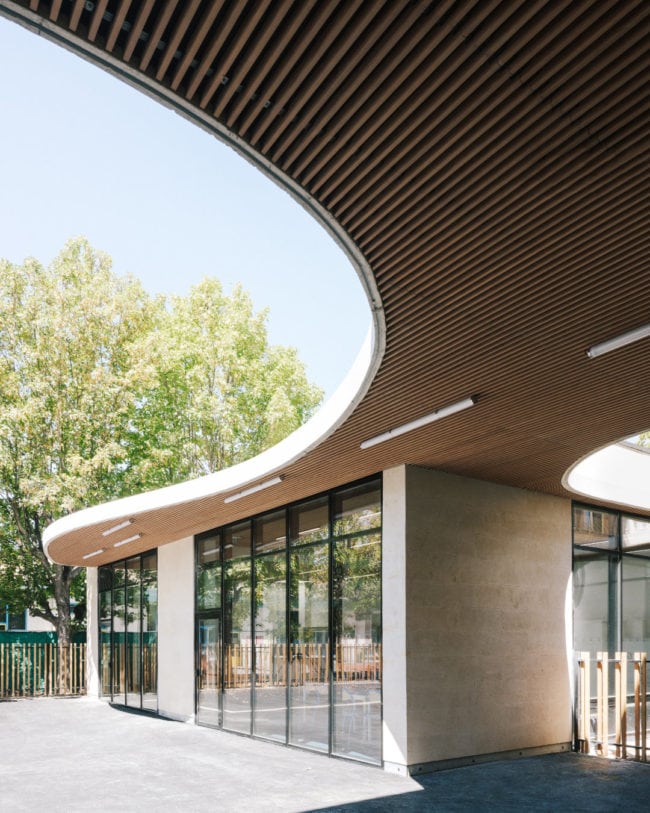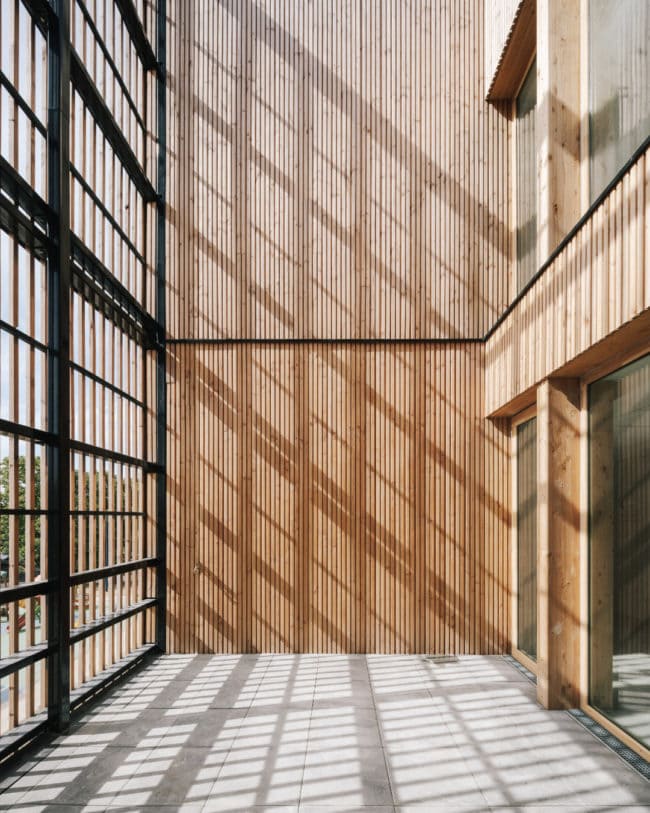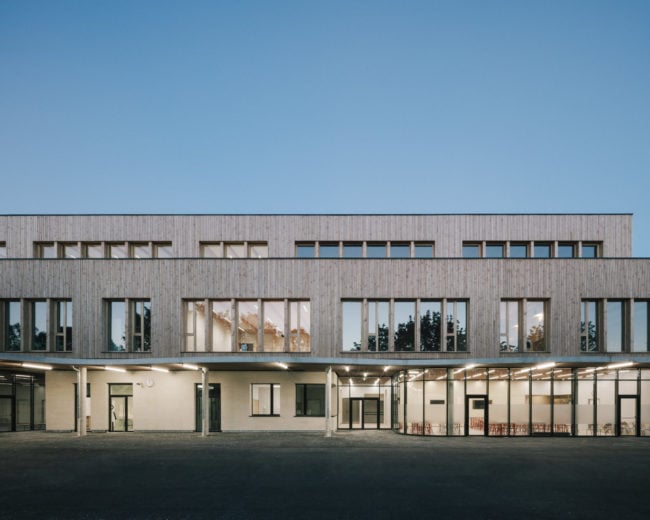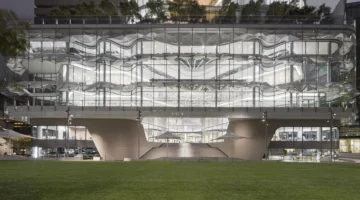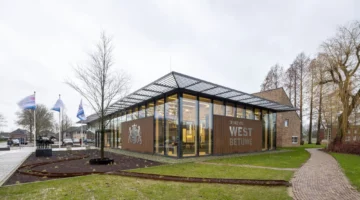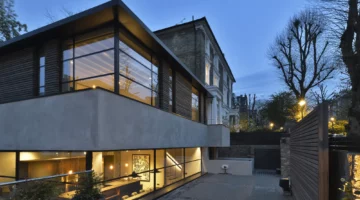For their project Simone de Beauvoir School in Drancy (93), France, Bond Society and Daudré-Vignier & Associés have based their intentions on three principal notions: spatial quality, functionality, and sustainable demand.
Delivered in 2020, this brand-new elementary school consisting of 10 classes, a leisure centre, and a school restaurant, pays particular attention to routes and views between its architectural volume and the lighting sources. Interior transparencies escape the feeling of confinement, and two double-height patios draw natural light and spatiality into the circulation patterns. Far from being simple passages, these spaces are punctuated with custom-made fixed furnishings that integrate storage and benches. The scale of the building, the flexibility of the interior layouts, and the choice of colors make it easier for children to navigate.
Furthermore, the visible wooden post / beam structure is an important intention of the project and illustrates an environmental example that raises the awareness of young and old alike.
Constructing a public building requires a conceptual, technical, aesthetic, and symbolic approach.
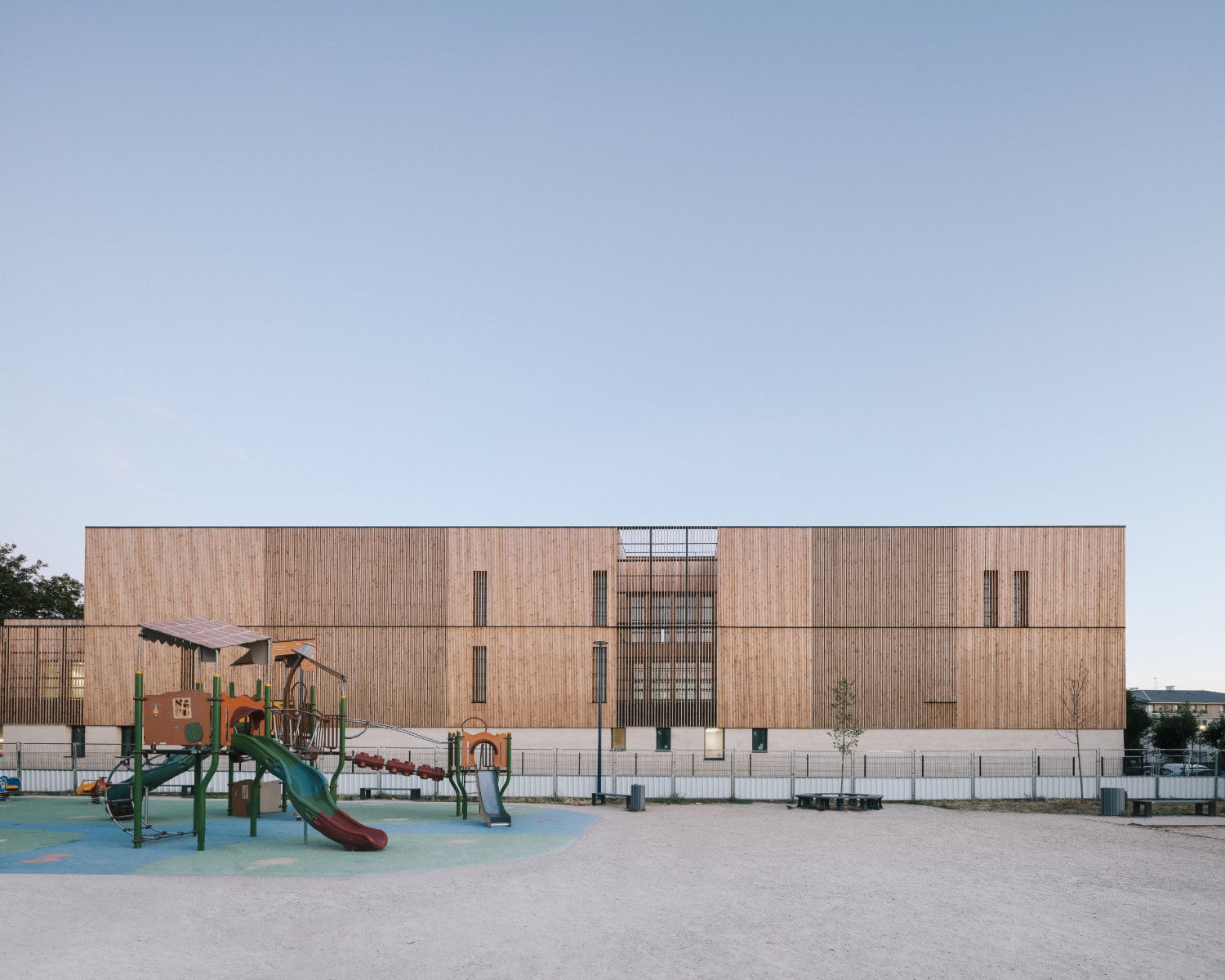
A public school on a neighborhood scale
The Simone de Beauvoir elementary school is respectfully located in the heart of a dense residential neighborhood surrounded by soothing wooded areas. It is part of a school context already present with the Jacqueline Quatremaire kindergarten, as well as the municipal La Farandole nursery school.
Additionally, this project takes the form of two wooden quadrilaterals placed on a limestone plinth, largely glazed on the courtyard side and closed at the rear on the public space side. It is established in an L-shaped composition to provide optimal free floor space, on one hand, and to create a boundary with Jules Guesde square on one side, and two 18-storey residential towers on the other.
A spatial quality and flexibility providing comfort and brightness
In accordance with City of Drancy requests, the building is oriented towards the heart of the school complex, isolating itself as much as possible from all external nuisances. The solid wood structure sits on a masonry plinth and is located in front of the existing kindergarten. The project also provides classrooms designed with the most favorable orientation to the west and onto the playground.
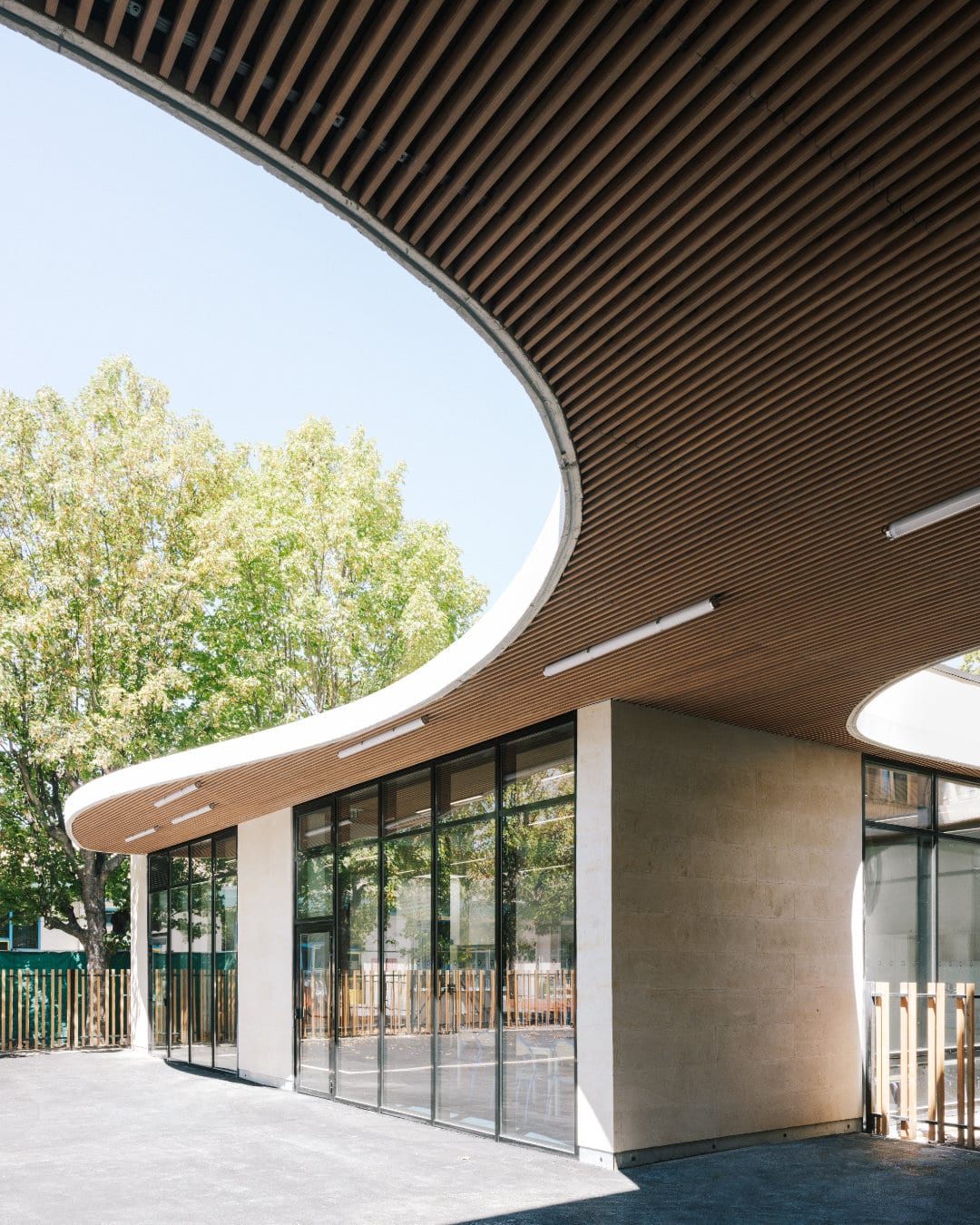
Functional access and openings
Firstly, the school's largely glazed ground floor forms a "center of life". It is a place of education, social life, and interactions, extending the space beyond its simple teaching function.
Outside, the openings have been tailored to its location, thus limited to the level of the square and the two apartment towers. In the interior courtyard, the building opens generously to reveal the rooms for school purposes, places of relaxation, and recreation. Additionally, the courtyard integrates the ground floor functions and connects the kindergarten with the new elementary school. More than an architectural gesture, this landmark for future students unites the different poles. The playgrounds of the two schools are isolated by way of a fence and a plant line, thus preserving views and contact between the children.
A tailor-made program and pat
Four major hubs are located on the ground floor:
- The reception hall serves the floors, the administrative center, and the foodservice area. The administrative center is in direct contact with the reception area and teaching facilities. On the upper floors, circulation isolates the blind servant grid on the garden side to distribute the served spaces (classes) on the courtyard side.
- The leisure centre, located on the dividing line, is connected with the existing nursery school.
- The multifunctional room and its storage room are located opposite the leisure center. The two spaces are separated by an open-air educational garden.
- The restaurant located closest to the entrance is designed as a soothing stopover. It opens onto the reception hall and the playground, with a layout that reduces delivery routes and limits truck access to the playground.
The elementary school is accessed from rue Jacqueline Quatremaire, between the existing kindergarten and the Farandole nursery school. This entrance is central through the reception hall.
A pedestrian pathway runs alongside the kindergarten and ends in the parental waiting area at the entrance to the playground. The spaces opening to the courtyard are easily identifiable and accessible, with limited routes: horizontal traffic connects two stairwells serving the two floors.
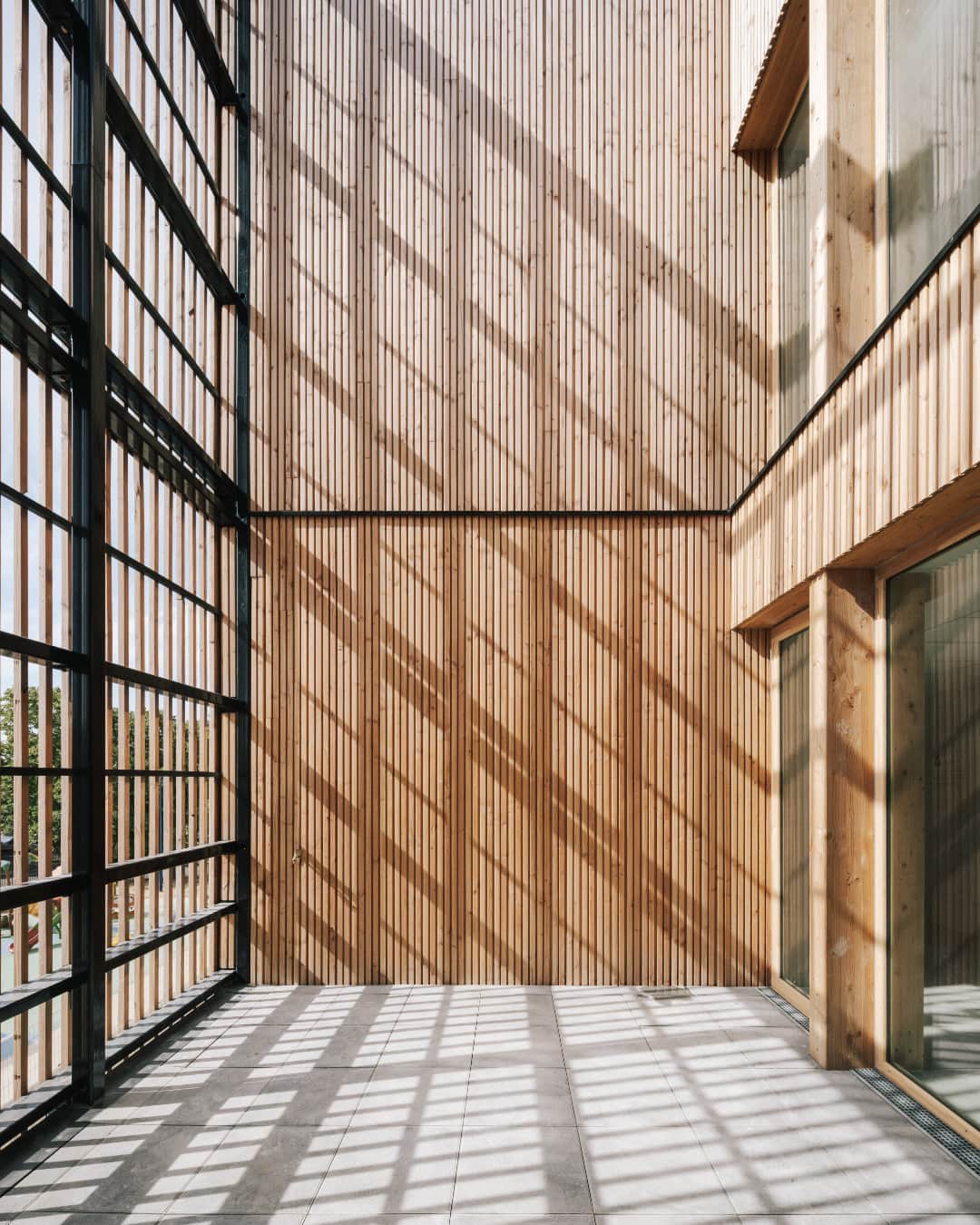
An important sustainable demand
The choice of materials was executed in line with RT 2012 thermal and environmental objectives. The school group is a project in which the two elevation levels are designed in wood. The superstructure is justified in the following ways:
- Wood construction helps develop the forestry sector and constitutes a relevant alternative to an all-concrete structure.
- Environmental quality and ecological interest: wood is a biologically renewable material, and wood absorbs significant amounts of CO2 in its cells, thus contributing to a reduction of the greenhouse effect. It is also energy efficient during installation.
- Dry-sector prefabrication: speed and precision.
Concrete construction is limited to the ground floor, the infrastructure, the stairwells, and the elevator.
The stone base is a relevant response to express and protect the building. The play of lights on these materials produces a maternal softness that is pleasant for the children. The stone used in construction was acquired from the Vassens quarries in the Aisne, less than 100km from the project.
This project represents a specific and prototypical production in its context and in its program. Usability and environmental requirements prevail in the design, which is intended to be conducive to a study environment and the development of students in accordance with the latest educational guidelines.
